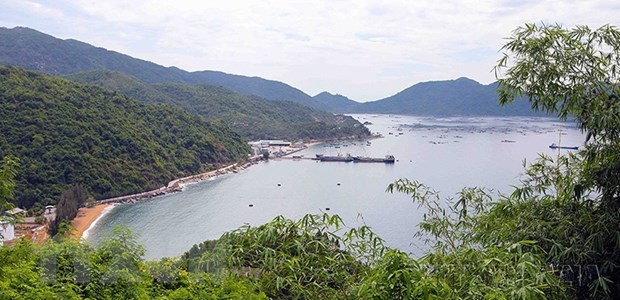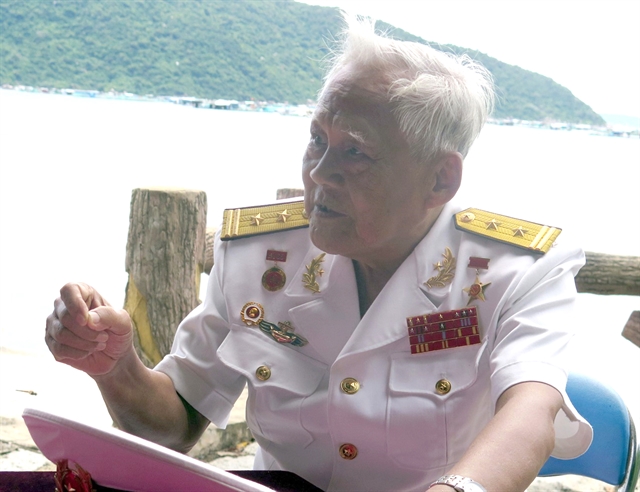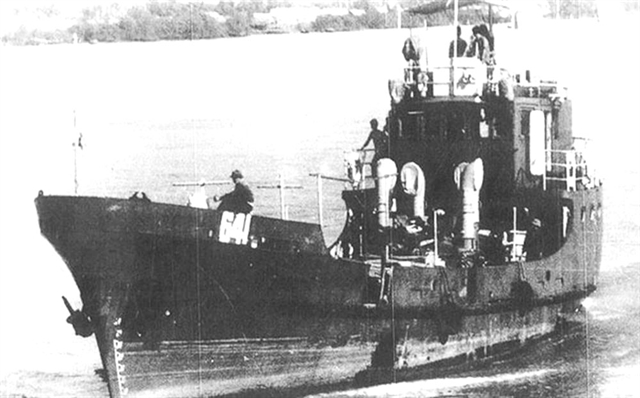 Society
Society

Lieutenant Colonel Hồ Đắc Thạnh, Hero of the People's Armed Forces of Việt Nam, 88, never forgets the trips he made on Hồ Chí Minh Trail at Sea nearly 57 years ago.

|
| Vũng Rô Wharf, in Hoà Xuân Nam Commune, in the southern coastal province of Phú Yên, is believed to be one of the important wharves of the Hồ Chí Minh Trail at Sea.— VNA/VNS Lê Lâm |
HÀ NỘI — Lieutenant Colonel Hồ Đắc Thạnh, Hero of the People's Armed Forces of Việt Nam, 88, never forgets the trips he made on Hồ Chí Minh Trail at Sea nearly 57 years ago.
Thạnh and many soldiers contributed to the miracle of Hồ Chí Minh Trail at Sea that still echoes in the nation's history although six decades have passed.
Thạnh was assigned to command ship No 641 carrying weapons from November 26, 1964, to support the South during the resistance war against the United States.
The vessel made a total of 12 trips, bringing weapons to the South, including three shipments which were docked at Vũng Rô Wharf, he said.
Vũng Rô Wharf is in Hoà Xuân Nam Commune, in the south central coastal province of Phú Yên, and is believed to be one of the most important wharves of the Hồ Chí Minh Trail at Sea. The wharf was later recognised as a national historic relic on June 18, 1997.
Thạnh said during his first trip, the ship was very near Vũng Rô Wharf at noon on November 28, 1964, after two days at sea.
However, Thạnh and his colleagues had to wait many hours and the ship only docked at the wharf on the evening of November 28, 1964, because they had to avoid the attention of the enemy, he added.
On that night, 63 tonnes of weapons were successfully unloaded from the ship by local soldiers before it returned safely to the north, he said.
On the second trip, the vessel arrived at the wharf on December 25, 1964. The ship carried not only weapons but also three tonnes of rice and other goods to support local soldiers.
Thạnh and his colleagues had to find ways to disguise the ship to avoid the attention of the enemy when the weapons and rice were unloaded.
To avoid attention, most of the ships carrying weapons for the southern battlefields were disguised as fishing boats with no registered numbers and they constantly changed their routes.
As soon as Thạnh’s ship returned to Hải Phòng Port, he received orders to make a third trip to Vũng Rô for the Lunar New Year of 1965.
When the ship entered Vũng Rô Bay on the evening of January 31, 1965, it was Lunar New Year's Eve, he said.
“When the ship reached the wharf at about 11.50 pm that night, suddenly, the artillery of the enemy exploded in the sky, we thought we were exposed, but we arrived safely,” he said.
The ship, now labelled number HQ 671, is on display at the Navy Museum under the Ministry of National Defence. The ship was recognised as a national treasure in 2017.

|
| Lieutenant Colonel Hồ Đắc Thạnh, Hero of the People's Armed Forces of Việt Nam.— VNA/VNS Photo |
Sacrifice
There were vessels that successfully reached Vũng Rô Wharf with dozens of tonnes of weapons and goods, but there were also moments when the guards had to be brave and decisive, fighting the enemy to ensure secrecy for the Hồ Chí Minh Trail at Sea.
Colonel Đặng Phi Thưởng, Hero of the People's Armed Forces of Việt Nam, said the wharf's guards consisted of K60 Infantry group; K64 Infantry group; eastern platoon and guerrillas in Hoà Hiệp and Hoà Xuân communes.
Civilian forces, who were assigned to unload weapons, consisted of Party members, Youth Union members and local officers, he said.
After successfully unloading weapons from ship No 143 on the night of February 15, 1965, the vessel was scheduled to return to the north on February, 16, 1965, he said.
However, its anchor winch was broken and the ship was disguised and temporarily anchored at Bãi Chùa Sand so the crew could fix it, he said.
The ship was exposed when the crew was fixing the problem and the enemy sent many aircraft to drop bombs and attack the wharf to seize the weapons, he added.
“Our forces fought back with the spirit of willing to be killed,” he said.
On the morning of February 17, 1965, the enemy sent ships to Bãi Chính Sand and Bãi Lau Sand.
The liberation forces fought back fiercely, pushing the enemy ships to the middle of the bay. The enemy troops could not reach where the ship was, and they also could not get ashore, he said.
After three days of February 18, 19 and 20, 1965, because the liberation forces fought back very fiercely, the enemy had to withdraw. Hundreds of the enemy troops were killed, including the platoon leader, he said.
In the battle, the liberation forces also lost 12 soldiers, but the weapons were safely protected and the civilian force continued to transport them to the base, he said.
Although operating for more than two months (between November 28, 1964 and February 15, 1965), Vũng Rô Wharf received and safely transported hundreds of tonnes of weapons and goods to the armed forces of provinces including Phú Yên, Khánh Hoà and Đắk Lắk.
That achievements were thanks to the bravery of both the crew of the ships and the wharf’s guard force.

|
| Ship No 641, the only one remaining among the ships that contributed to the miracle of the Hồ Chí Minh Trail at Sea, was recognised as a national treasure in 2017.— VNA/VNS File Photo |
North-South kinship
On the third arrival of ship No 641 from the North to Vũng Rô Wharf, Thạnh not only brought weapons and three tonnes of rice, but also tea and a Nhật Tân peach blossom branch for soldiers at the wharf to celebrate the Lunar New Year.
Thưởng said he was 19, and that was the first time he ate a bowl of rice sent from the north.
“It is not an expensive gift but it is the sincere kinship of the North with the South,” he added.
“The soldiers and I felt very touched,” he said.
Also at the wharf, Nguyễn Thị Tản, a female militia member, gave Thạnh a handful of land of Vũng Rô, wrapped in a handkerchief, before Thạnh went back to the North.
Thạnh was born in Phú Yên Province and the handful of Vũng Rô land was believed to be a part of the homeland Thạnh could bring with him when he was working on a mission, Tản said.
The handful of land was later carefully stored by Thạnh and he always carried it with him.
Later, the handful of land was displayed at the Navy Museum. The image of Tản giving a handful of land to Thạnh was carved into a bronze statue as a symbol of the North-South kinship.
The Hồ Chí Minh Trail at Sea was set up on October 23, 1961 to help with the transportation of weapons from the North to aid the southern liberation army.
During the resistance war against the US imperialists, the route was considered a “true legend” and a miracle of the Vietnamese nation, contributing to the 1975 spring victory. — VNS




